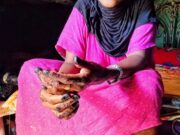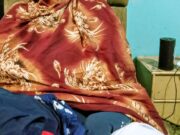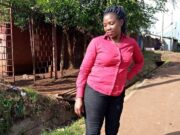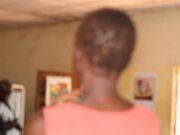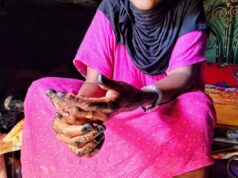This is a research report on the utilization of modern family planning among blended Somali Women (refugees and natives) in Nairobi City, Kenya. The study was undertaken by Dr. Eliphas Gitonga Makunyi, a population and sexual reproductive health expert and lecturer at Kenyatta University (Kenya) and IUSSP Urban Family Planning Fellow – gitonga.eliphas@ku.ac.ke
1.1 Background and significance:
Globally, there are about 20 million refugees and 38 million internally displaced persons (IDPs). This is growing rapidly, with the poorest countries accounting for the majority of this (1). More than 60% of the world’s refugee population and 80% of the internally displaced persons live in urban environments (2).
Kenya is one of the hosts of the largest refugee populations in Africa. Nairobi City hosts the majority of refugees outside of refugee camps (3). The refugees within the urban areas are deemed to be present illegally and are not supported by health policies, including family planning within the city (4).
The reproductive health of refugees is vulnerable due to poor living conditions and prohibitive health policies. It is worsened by sexual violence and restricted access to family planning services. The consequence is repeat high-risk pregnancies, HIV/AIDS, sexually transmitted infections, and unsafe abortions (5). The total fertility rate within counties (North Eastern) predominantly inhabited by Somalis in Kenya is among the highest at 6.4 compared to the national rate of 3.9. The utilization of family planning in North Eastern Kenya is very low at 3.4% (6).
Somali women’s reproductive health needs are unique in that they rarely use contraceptives for family planning. In scenarios where they use it, the focus is to achieve spacing and not limit the number of children (7). Early marriages and bearing many children have been an unending practice commonly among Somali populations admitted to Kenyan refugee camps. The desire for large families to bring extra income, household assistance, and caregiving led to low use of family planning services (8).
The study sought to examine the dynamics and predictors of utilization of family planning among refugee and native married Somali refugee women aged 15-39 years in Nairobi City, Kenya.
1.2 Research questions
- What are the dynamics in utilization of modern family planning between refugee Somali Women from the native Somali women in Nairobi City, Kenya?
- What are the predictors of utilization of modern family planning among refugee and native (blended) Somali Women in Nairobi City, Kenya?
1.3 Methodology
The data source is a household survey of 2021 (April to November) in Nairobi City of a sample of 424 married refugee and 552 native Somali women. Both groups of women were aged women aged 15–39 years.
Somali refugees in Kenya originate from Somalia, Ethiopia, and Djibouti.
The dependent variable was utilization of family planning, and the independent variables were age, residence (formal vs. informal settlements), duration of living in the city, and perceptions towards family planning.
1.4 Results
The prevalence of modern family planning among Somali refugee women was 24% compared to 43.5% among the natives.
Among the Somali refugee women using family planning, the preferred methods are injectable (19%), pill (9%), Implant (31%), Intra uterine device (10%), male condom (27%) and others (4%).
Among the native Somali women using family planning, the preferred methods are Injectable (40%), pill (21%), Implant (26%), Intra uterine device (6%), male condom (3.5%) and others (3.5%).
Socio-demographic predictors of utilization of modern family planning among refugees:
Residence, where formal residence reduces the chances (Odds Ratio [OR] = 0.34, P = 0.000, Informal residence is the reference).
Age groups older than 15-19 years increase the chances of utilization (OR = 2.9 & P = 0.003 for ages 20-24, OR 5.6 & P = 0.000 for ages 25-29 and OR =6.8 & P = 0.000 for ages 30-34).
Duration of stay in the city with up to 10 years as the reference increases the chances of utilization (OR = 2.11, P = 0.047 for duration between 21- 30 years).
Education using no formal education as the reference –tertiary education improves the level of utilization (OR = 2.4, P = 0.039).
Socio demographic predictors among the native Somali women:
Increase in changes of utilization if the woman resides in a formal settlement as compared to informal (OR =1.6, P = 0.017).
Increase in utilization with ages older than 15-19 years (OR = 3.6 & P = 0.029 for ages 20-24, OR 4.2 & P = 0.014 for ages 35-39).
Perceptions that can predict utilization among refugees include:
Decrease in chances of utilization by strongly agreeing to “women being disallowed to decide on the use of family planning” (OR =0.22, P = 0.02).
Reduction in chances of utilization by strongly agreeing to “I do not have information on family planning” (OR = 0.11, P = 0.004).
Reduction in chances of utilization by strongly agreeing to “my husband does not approve use of family planning” (OR =0.35 P =0.012).
Strongly agreeing that “my peers do not approve use of family planning” reduces the chances of utilization (OR = 0.39 P = 0.003).
Critical perceptions on family planning that would predict utilization among native Somali Women:
Reduction with strong agreement that “facilities are far” (OR =0.25 P=0.001).
Strongly agreeing that “quality of family planning services is poor” reduces the chances of utilization (P = 0.39 P = 0.008).
Strongly agreeing that “my faith (Islam) does not allow use of family planning” reduces the chances of utilization of family planning (OR =0.28 P = 0.000).
Strongly agreeing that “my community beliefs do not allow use of family planning” reduces the chances of utilization (OR =0.31 P =0.000).
Strongly agreeing that “I do not have information on family planning” reduces the chances of utilization (OR=0.32 P=0.000).
Strongly agreeing that “my husband does not approve use of family planning” reduces the chances of utilization (OR =0.4 P =0.004).
Strongly agreeing that “my peers do not approve use of family planning” reduces the chances of utilization (OR = 0.39 P =0.003).
1.5 Conclusions
The prevalence of modern family planning is almost double among the native Somali Women compared to the refugee Somali Women. The most preferred methods among the refugees are implants and male condoms, while injectables and implants are highest among the native Somali women.
The socio-demographic predictors of utilization of family planning among both groups are residence and age. The level of education is a predictor among refugees.
Perceptions on husband approval, peer approval and lack of information on family planning are predictors for utilization for both groups.
The perception on client’s faith (Islam), distance to health facilities and quality of family planning services are predictors for utilization among the natives while the perception that women are not allowed to make decisions on their family planning is a predictor among the refugees.
1.6 Funding and acknowledgement
IUSSP Panel on Fertility, Family Planning and Urban Development and Bill & Melinda Gates Foundation (OPP1179495) for funding
1.7 References
- United Nations High Commissioner for Refugees (2016). Refugee figures. Geneva, Switzerland: UNHCR.
- Hans Park (2016). The power of cities. https://www.unhcr.org/innovation/the-power-of-cities/
- Sara Pavanello, Samir Elhawary and Sara Pantuliano (2010) Hidden and exposed: Urban refugees in Nairobi, Kenya. Retrieved from https://www.odi.org/sites/odi.org.uk/files/odi-assets/publications-opinion-files/5858.pdf
- Kativa M. and Blessing M. (2019). Urban refugees in Nairobi: tackling barriers to accessing housing, services and infrastructure on https://www.environmentandurbanization.org
- WHO (2018), Health of refugees and migrants; Regional situation analysis, practices, experiences, lessons learned and ways forward, WHO, Geneva.
- National Bureau of Statistics-Kenya and ICF International.2014 KDHS Key Findings.
- Kiura, A. W. (2014). Constrained Agency on Contraceptive Use among Somali Refugee Women in the Kakuma Refugee Camp in Kenya. Gender, Technology and Development, 18(1), 147–161. https://doi.org/10.1177/0971852413515321
- Gee, S., Vargas, J., & Foster, A. M. (2019). “The more children you have, the more praise you get from the community”: exploring the role of sociocultural context and perceptions of care on maternal and newborn health among Somali refugees in UNHCR supported camps in Kenya. Conflict and health, 13(1), 1-10.














